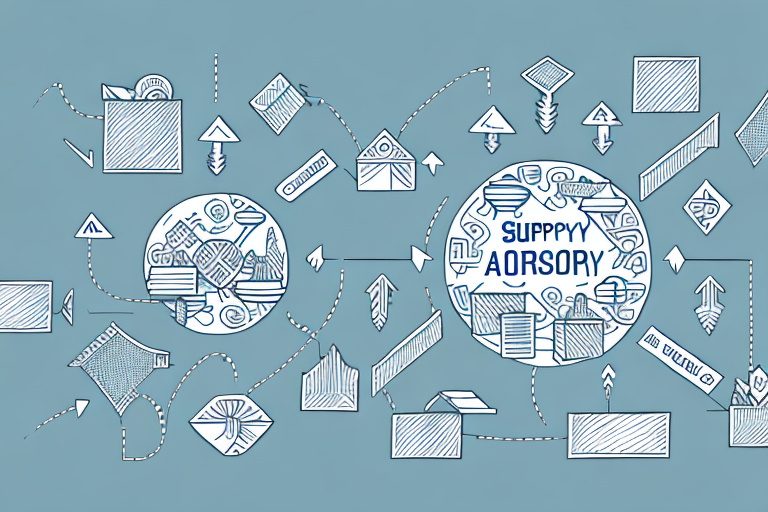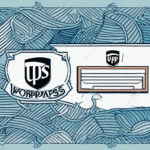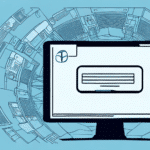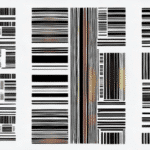Understanding Export Control Classification Numbers (ECCNs) in the Supply Chain
Managing compliance and regulations is a critical challenge for businesses operating within the supply chain. A key component of this regulatory landscape is the understanding of Export Control Classification Numbers (ECCNs). This article provides a comprehensive overview of ECCNs, their significance in the supply chain, and best practices for maintaining compliance with ECCN regulations.
What are ECCNs and Why Are They Important in the Supply Chain?
ECCNs are five-character alphanumeric codes used to categorize items that are exported from the United States. These classifications determine the level of control and licensing requirements based on the item’s potential military applications, dual-use capabilities, or implications for national security. Managed under the Export Administration Regulations (EAR), ECCNs are essential for ensuring that sensitive technologies do not fall into the wrong hands.
Adhering to ECCN regulations is paramount for businesses to avoid severe legal and financial repercussions. Non-compliance can result in hefty fines, loss of export privileges, and irrevocable damage to a company's reputation. For instance, in recent years, companies have faced fines exceeding $100 million for inadvertent violations, highlighting the critical nature of proper ECCN classification.
ECCNs are dynamic; they evolve in response to technological advancements and emerging security threats. Companies must stay informed about the latest updates to ensure ongoing compliance. The U.S. government periodically reviews and updates the Commerce Control List (CCL) to reflect these changes, making continuous monitoring essential.
Moreover, ECCNs are part of a broader set of export control regulations, including the International Traffic in Arms Regulations (ITAR) and various sanctions programs. Understanding the interplay between these regulations is crucial for comprehensive compliance across different jurisdictions and product categories.
The History and Evolution of ECCNs
The framework for ECCNs originated with the establishment of the Coordinating Committee on Multilateral Export Controls (COCOM) in 1949, designed to regulate the export of sensitive technologies during the Cold War. COCOM laid the groundwork for the contemporary ECCN system by categorizing controlled items based on their potential impact on national security.
Following the dissolution of COCOM after the Cold War, the U.S. adopted the Wassenaar Arrangement principles, integrating them into the Export Administration Regulations (EAR). The EAR formalized ECCNs, creating a standardized system for classifying controlled goods, technologies, and software.
Significant updates to the ECCN framework occurred in 2016, reflecting rapid technological advancements and shifting geopolitical landscapes. The introduction of new ECCNs and revisions to existing ones ensured that the control measures remained effective in mitigating emerging threats.
ECCNs have also gained international recognition, with regions like the European Union implementing similar export control systems. The EU’s dual-use regulation aligns closely with the U.S. ECCN structure, facilitating coordinated global export control efforts.
How to Determine if Your Product Requires an ECCN
Identifying whether a product requires an ECCN begins with a thorough analysis of its technical specifications and potential applications. Products with military, nuclear, or satellite applications typically fall under ECCN regulations. Additionally, items incorporating encryption software or other restricted technologies are subject to classification.
The Commerce Control List (CCL) is the primary reference for determining the appropriate ECCN. The CCL is organized into ten categories and five product groups, with each combination corresponding to a specific ECCN. It's important to recognize that some items may have multiple ECCNs based on their technical characteristics.
ECCN classification is not a one-time task; it requires ongoing evaluation to accommodate technological advancements and regulatory updates. Regular reviews ensure that products remain correctly classified, minimizing the risk of non-compliance.
For businesses uncertain about the classification process, consulting with an export control specialist or legal professional is advisable. These experts can provide guidance on accurate classification and navigate the complexities of export regulations.
The Role of Government Agencies in ECCN Classification
While businesses are tasked with determining the correct ECCN for their products, government agencies play a pivotal role in the classification and enforcement processes. The Bureau of Industry and Security (BIS) oversees the review of commodity classifications, offers guidance on licensing requirements, and monitors compliance with export regulations.
Other agencies involved in the ECCN landscape include the Department of Commerce’s Office of Export Enforcement (OEE), which investigates and enforces violations, and the Department of State’s Directorate of Defense Trade Controls (DDTC), responsible for regulating the export of defense articles and services.
Understanding the roles of these agencies is crucial for businesses to maintain compliance and navigate the complexities of ECCN classifications effectively. Failure to adhere to regulations enforced by these bodies can result in significant penalties, including substantial fines and imprisonment.
Common Mistakes to Avoid When Dealing with ECCNs
Proper ECCN classification is critical, and several common pitfalls can lead to non-compliance:
- Misclassification: Often results from inadequate understanding of technical specifications or regulatory nuances, leading to incorrect ECCN assignments.
- Ignoring Regulatory Updates: ECCN regulations evolve, and failing to stay informed about changes can result in outdated classifications and subsequent violations.
- Assuming Non-Control: Even seemingly benign products may fall under export controls. A thorough analysis is essential to ensure no item is inadvertently excluded.
- Overreliance on Automated Tools: While classification software can aid the process, human oversight is necessary to verify accuracy and account for contextual factors.
To mitigate these risks, businesses should implement robust classification procedures, provide regular training for compliance teams, and engage with experts to validate classifications.
How to Apply for an ECCN or Reclassify Your Product
Applying for an ECCN or reclassification involves a detailed process managed by the BIS. Businesses can submit a Commodity Classification Request (CCL) to determine the appropriate ECCN for their products. This request must include comprehensive technical descriptions and justifications for the classification.
Reclassification may be necessary when technological advancements alter a product’s characteristics or when regulatory changes impact existing classifications. Businesses should provide detailed technical information and documentation to support reclassification requests, which may also involve amendments to existing licenses.
Given the complexities of the application process, seeking assistance from export control attorneys or technical experts is highly recommended to ensure accurate and timely submissions.
Best Practices for Managing and Tracking ECCN Compliance in Your Supply Chain
Establishing a comprehensive ECCN compliance program is essential for effective management. Best practices include:
- ECCN Screening Procedures: Implement standardized procedures to evaluate products against the CCL.
- Accurate Record-Keeping: Maintain detailed records of ECCN classifications, licensing agreements, and compliance activities.
- Employee Training: Regularly train staff on ECCN regulations and compliance responsibilities.
- Continuous Review: Periodically assess and update compliance programs to align with evolving regulations.
Clear communication with suppliers and partners is also vital. Establishing channels for sharing compliance requirements and updates ensures that all parties understand their roles in maintaining compliance. Additionally, leveraging technology solutions, such as automated screening tools, can enhance the efficiency and accuracy of compliance processes.
Consequences of Non-Compliance with ECCN Regulations
Non-compliance with ECCN regulations can have severe repercussions for businesses, including:
- Financial Penalties: Companies may face substantial fines, sometimes exceeding millions of dollars, for violations.
- Loss of Export Privileges: Non-compliant businesses can lose the ability to export, significantly impacting revenue and operations.
- Reputational Damage: Compliance failures can erode trust with customers, partners, and stakeholders.
- Asset Seizure: The government can seize goods and equipment involved in violations, resulting in financial losses.
- Legal Consequences: Individuals responsible for violations may face imprisonment or personal fines.
Moreover, non-compliance attracts increased scrutiny from regulatory agencies, leading to more frequent audits and inspections. This heightened oversight can drain resources and disrupt business operations.
Upcoming Changes and Updates to ECCN Regulations to Watch For
The landscape of ECCN regulations is continually evolving in response to technological advancements and geopolitical shifts. Key upcoming changes include:
- Semiconductor Manufacturing Controls: Proposed additions to the CCL may include new classifications for advanced semiconductor manufacturing equipment, reflecting the sector’s strategic importance.
- Emerging Technologies: The scope of the EAR may expand to encompass new technologies such as artificial intelligence (AI) and quantum computing. This expansion could result in the creation of new ECCNs, necessitating updated compliance measures.
- Enhanced Licensing Requirements: Stricter licensing protocols may be introduced for certain high-risk categories, requiring businesses to adopt more rigorous compliance strategies.
Staying informed about these developments is critical for businesses to proactively adjust their compliance programs and maintain adherence to the latest regulations.
Case Studies: Real-World Examples of Companies Dealing with ECCN Compliance Challenges
Examining real-world cases underscores the importance of ECCN compliance:
- ZTE Corporation: The Chinese telecommunications giant faced a seven-year export ban for allegedly violating U.S. sanctions on Iran and North Korea by exporting restricted items without proper licenses. This case highlights the severe consequences of non-compliance.
- FLIR Systems Inc.: FLIR agreed to pay over $30 million in fines for exporting items without necessary licenses and violating ITAR. This case emphasizes the financial risks associated with improper ECCN classification.
- Huawei Technologies Co. Ltd.: Added to the U.S. Entity List in 2019, Huawei faced restrictions that limited American companies from conducting business without a license. This move was driven by national security concerns and significantly impacted Huawei's global supply chain.
Expert Interviews: Insights and Advice from Industry Leaders on Navigating the World of ECCNs
Leading industry experts advocate for the following strategies to effectively navigate ECCN regulations:
- Develop Comprehensive Compliance Policies: Establish clear and detailed policies that outline compliance procedures and responsibilities.
- Regular Employee Training: Continuously educate employees on the latest ECCN regulations and best practices for compliance.
- Engage Legal and Technical Experts: Consult with specialists to ensure accurate ECCN classification and adherence to licensing requirements.
- Conduct Internal Audits: Perform regular audits to identify and rectify any compliance gaps proactively.
In conclusion, understanding and adhering to ECCNs is crucial for businesses within the supply chain. Effective compliance not only mitigates legal and financial risks but also fosters trust and strengthens relationships with customers and partners.
By implementing robust compliance programs, staying informed about regulatory changes, and seeking expert guidance, businesses can navigate the complexities of ECCN regulations successfully, ensuring sustained operational integrity and competitive advantage.






















